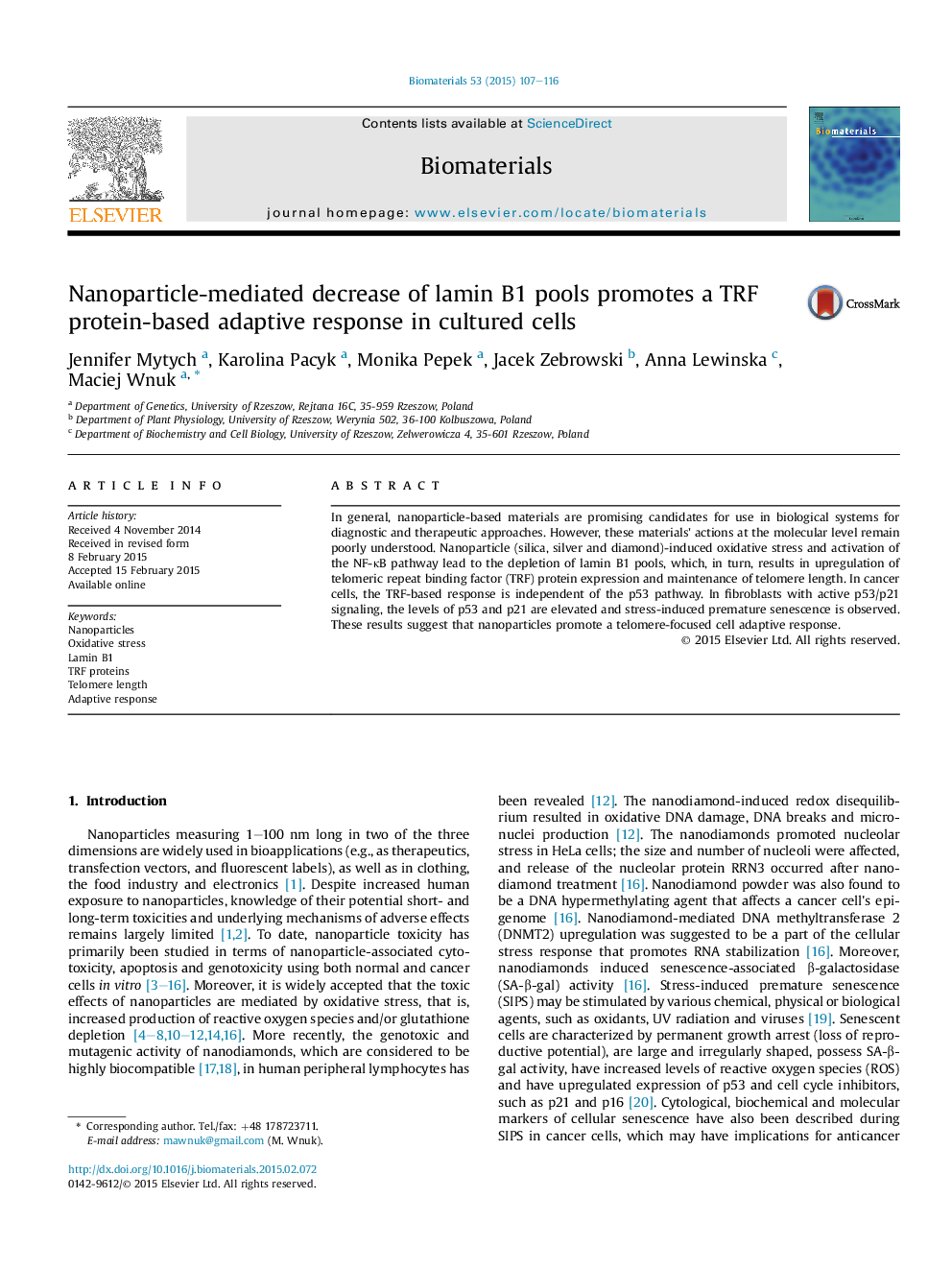| Article ID | Journal | Published Year | Pages | File Type |
|---|---|---|---|---|
| 6485880 | Biomaterials | 2015 | 10 Pages |
Abstract
In general, nanoparticle-based materials are promising candidates for use in biological systems for diagnostic and therapeutic approaches. However, these materials' actions at the molecular level remain poorly understood. Nanoparticle (silica, silver and diamond)-induced oxidative stress and activation of the NF-κB pathway lead to the depletion of lamin B1 pools, which, in turn, results in upregulation of telomeric repeat binding factor (TRF) protein expression and maintenance of telomere length. In cancer cells, the TRF-based response is independent of the p53 pathway. In fibroblasts with active p53/p21 signaling, the levels of p53 and p21 are elevated and stress-induced premature senescence is observed. These results suggest that nanoparticles promote a telomere-focused cell adaptive response.
Related Topics
Physical Sciences and Engineering
Chemical Engineering
Bioengineering
Authors
Jennifer Mytych, Karolina Pacyk, Monika Pepek, Jacek Zebrowski, Anna Lewinska, Maciej Wnuk,
